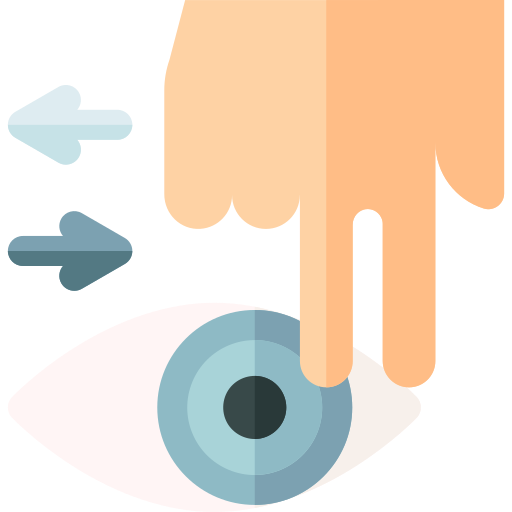
This logo isn't an ad or affiliate link. It's an organization that shares in our mission, and empowered the authors to share their insights in Byte form.
Rumie vets Bytes for compliance with our
Standards.
The organization is responsible for the completeness and reliability of the content.
Learn more
about how Rumie works with partners.

In 1987, Dr. Francine Shapiro was walking around a small lake in a park, and started to feel anxious and experience distressing intrusive thoughts. She noticed that when she moved her eyes back and forth to observe her surroundings, her anxiety lessened and her disturbing thoughts quieted.

Dr. Shapiro wondered whether bilateral eye movements (moving the eyes back and forth in both directions) had the same desensitizing effect on others.
She began testing this theory and eventually added other aspects to the treatment, resulting in the development of eye movement desensitization and reprocessing therapy (EMDR).
How Does EMDR Work?
"Are you trying to tell me that just moving my eyes back and forth can heal me from trauma?!"
 It definitely sounds strange at first! And the truth is that no one knows for sure exactly how EMDR works to heal the brain.
It definitely sounds strange at first! And the truth is that no one knows for sure exactly how EMDR works to heal the brain.
One theory: people experience PTSD and related mental health disorders because of traumatic events that happened in the past that weren’t fully processed. Something got stuck in the brain’s natural healing process, kind of like when a cut on your finger doesn’t heal properly because a splinter was caught in it.

Activating both sides of the brain with EMDR seems to help the brain reprocess traumatic memories in a more adaptive way. The goal is to "change the way that the memory is stored in the brain." You’ll still remember what happened, but without intense feelings of distress.
Quiz
Which of these events may cause emotional trauma? Select all that apply.
In fact, all of these events and many others may cause emotional trauma, meaning that they impede an individual's functioning and create negative self-beliefs.
Who Might Benefit From EMDR?
What Does EMDR Involve?
 1. Your therapist will work with you to make a treatment plan by asking you questions about the history of the problem you're dealing with. Together, you'll create a list of distressing events from the past that caused you to develop negative beliefs. (1-2 sessions)
1. Your therapist will work with you to make a treatment plan by asking you questions about the history of the problem you're dealing with. Together, you'll create a list of distressing events from the past that caused you to develop negative beliefs. (1-2 sessions)
 2. Your therapist will explain what you can expect when you begin EMDR. They might also teach you relaxation techniques to use during treatment, like establishing a “safe place” you can go to in your mind. (1-4 sessions)
2. Your therapist will explain what you can expect when you begin EMDR. They might also teach you relaxation techniques to use during treatment, like establishing a “safe place” you can go to in your mind. (1-4 sessions)
 3. Together with your therapist, you’ll pick an event from the list, and identify what negative self-belief you may have learned from the event (for example, “I'm worthless,” “I'm helpless,” etc.).
3. Together with your therapist, you’ll pick an event from the list, and identify what negative self-belief you may have learned from the event (for example, “I'm worthless,” “I'm helpless,” etc.).
You’ll also pick a positive self-belief you would rather believe. Your therapist will ask you to rate how true the positive belief feels, and how distressing the target event feels.
 4. Your therapist will induce bilateral eye movements while you focus on the memory. They may move their fingers back and forth and ask you to follow your fingers with your eyes, use a machine with lights that move back and forth, or give you small buzzers to hold in each hand that alternately vibrate and light up.
4. Your therapist will induce bilateral eye movements while you focus on the memory. They may move their fingers back and forth and ask you to follow your fingers with your eyes, use a machine with lights that move back and forth, or give you small buzzers to hold in each hand that alternately vibrate and light up.
Usually this is done in sets of 30 to 60 seconds. In between sets, the therapist will ask you what came up for you.
Reprocessing a single traumatic event is usually accomplished within 3 sessions.
The goal is for you to experience no distress around the event and to feel that the positive self-belief is completely true.

This Byte has been authored by
Avigail Roth
Elementary Teacher | Learning Designer
This Byte has been reviewed by
Lisa VanVleet
PhD, LCSW-S

